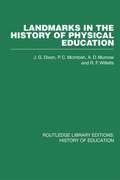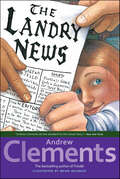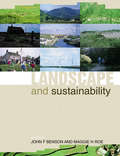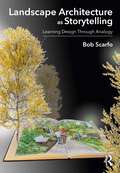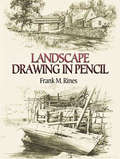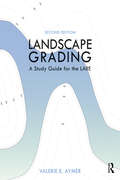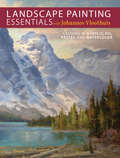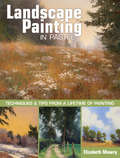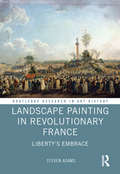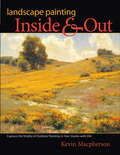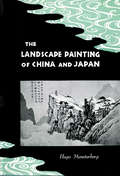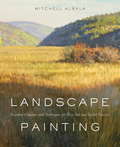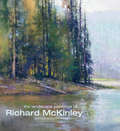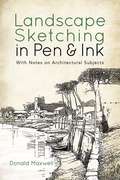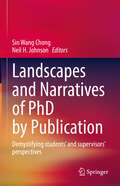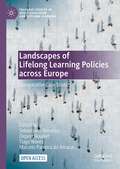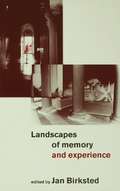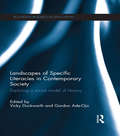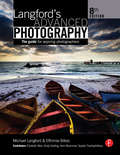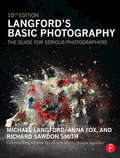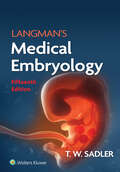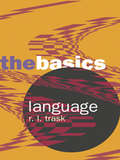- Table View
- List View
Landmarks in the History of Physical Education
by P C McIntoshOriginally published in 1957,the first part of this volume examines physical education in classical Greece and Imperial Rome during the first and second centuries A.D. and in Italy and England during the Renaissance. Each of these periods witnessed remarkable developments in the practice and theory of physical education: developments which still have present-day significance. The second part of the book traces the simultaneous development of physical education in different parts of the USA and Europe from the end of the eighteenth century onwards.
The Landry News: Frindle; The Landry News; The Janitor's Boy (Juvenile Ser.)
by Andrew ClementsNEW STUDENT GETS OLD TEACHERThe bad news is that Cara Landry is the new kid at Denton Elementary School. The worse news is that her teacher, Mr. Larson, would rather read the paper and drink coffee than teach his students anything. So Cara decides to give Mr. Larson something else to read—her own newspaper, The Landry News.Before she knows it, the whole fifth-grade class is in on the project. But then the principal finds a copy of The Landry News, with unexpected results. Tomorrow’s headline: Will Cara’s newspaper cost Mr. Larson his job?
Landscape and Sustainability
by John F. Benson Maggie H. RoeThis unique book is about landscape, sustainability and the practices of the professions which plan, design and manage landscapes at many scales and in many locations; urban, suburban and rural. Despite the ubiquity of 'sustainability' as a concept, this is the first book to address the relationship between landscape architecture and sustainability in a comprehensive way.Much in the book is underpinned by landscape ecology, in contrast to the idea of landscape as only appealing to the eye or aspiring cerebrally to be fine art. As this book argues, landscape is and must be much more than this; landscape architecture is about making places which are biologically wholesome, socially just and spiritually rewarding.
Landscape Architecture as Storytelling: Learning Design Through Analogy
by Bob ScarfoThis book introduces students, practitioners, and laypeople to a comfortable approach to learning landscape architectural design free of design jargon and derived from their existing knowledge. A step-by-step process has readers consider their knowledge of language as metaphorically related to basic design and landscape design. Through information delivery and questioning processes, readers build on what they already know, their tacit understanding of language as applied to problem solving and storytelling. Everyone is a storyteller. Taken one step at a time through a three-tiered analogy of language, basic design, and landscape design, readers learn the makeup and role of such design features as points, lines, planes, volumes and sequential volumetric spaces that make up their worlds. With that, in a sense, new world view, and numerous questions and examples, readers begin to see that they in fact daily read the environments in which they live, work, play, raise families, and grow old. Once they realize how they read their surroundings they are helped to recognize that they can build narratives into their surroundings. At that point the existence of authored landscape narratives finds readers understanding a design process that relies on the designer-as-author, landscape-as-text, and participant, user-as-reader. That process has the reader write a first- or second-person narrative, visually interpret the written narrative into a storyboard, and turn the storyboard into a final design, the physical makeup of which is read by those who participate in it.
Landscape Drawing in Pencil (Dover Art Instruction Ser.)
by Frank M. RinesConcise and beautifully illustrated, this guide provides invaluable instruction on the art of pencil drawing. It covers the basics of holding the pencil, applying different strokes, shading, perspective, and the rendering of different textures, as well as the finer points of pictorial composition and drawing from nature.Based on the author's years of experience teaching art students at all levels, this book is ideal for home or class use. Its thirty-six evocative sketches range from English castles to American bridges, with a few detailed close-ups showing how to surmount some of the problems of depicting rocks, roofs, standing water, or leafy tree branches. The accompanying text describes how artists at every level of experience can develop their own pencil technique by employing fundamental rules.
Landscape Grading: A Study Guide for the LARE
by Valerie E. AymerFor every element that we design in the landscape, there is a corresponding grading concept, and how these concepts are drawn together is what creates a site grading plan. This study guide explores these concepts in detail to help you learn how to grade with confidence in preparation for the Grading, Drainage and Construction Documentation section of the Landscape Architecture Registration Examination (LARE). This updated second edition is designed as a textbook for the landscape architecture student, a study guide for the professional studying for the LARE, and a refresher for licensed landscape architects. New to this edition: • Additional illustrations and explanations for grading plane surfaces and warped planes, swales, berms, retention ponds, and drain inlets; • Additional illustrations and explanations for grading paths, ramp landings, ramp/stair combinations and retaining walls; • A section on landscape and built element combinations, highlighting grading techniques for parking lots, culverts and sloping berms; • A section on landscape grading standards, recognizing soil cut and fill, determining pipe cover, finding FFE, and horizontal and vertical curves; • Updated information about the computer-based LARE test; • All sections updated to comply with current ADA guidelines; • An appendix highlighting metric standards and guidelines for accessibility design in Canada and the UK. With 223 original illustrations to aid the reader in understanding the grading concepts, including 32 end-of-chapter exercises and solutions to practice the concepts introduced in each chapter, and 10 grading vignettes that combine different concepts into more robust exercises, mimicking the difficulty level of questions on the LARE, this book is your comprehensive guide to landscape grading.
Landscape Painting Essentials with Johannes Vloothuis: Lessons in Acrylic, Oil, Pastel and Watercolor
by Johannes VloothuisSecrets to Painting Beautiful LandscapesPainting the landscape can be fun and rewarding--if you make the right decisions as you paint. After all, it is the artist's greatest challenge to somehow capture a sense of it all--the grandness, the majesty, the splendor of nature--with just a few strokes of paint on a canvas. Popular art instructor Johannes Vloothuis makes the process a whole lot easier with the essential techniques, key concepts and expert advice he shares in this book.Learn straightforward strategies to make your paintings more interesting and dramatic, such as simplifying the foreground, composing with abstract shapes and harmonizing colors.Discover speci?c techniques for painting landscape elements including mountains, water, foliage, snow and more.9 step-by-step demonstrations walk you through all the techniques necessary to create successful landscape paintings.Landscape Painting Essentials is packed with practical information. You'll make the critical shift from painting what you see to painting as an artist sees. You'll learn to strategically edit shapes, rearrange elements and enhance color. You'll gain a better understanding of what to include in your painting, what to change and what to leave out. Most importantly, you'll gain the skills necessary to turn nature's bounty of inspiration into original, stunning landscape paintings.
Landscape Painting in Pastel: Techniques and Tips from a Lifetime of Painting
by Elizabeth MowryCapture the magic of nature in pastel!From the first ferns unfurling in spring to the flaming red foliage of fall and the snow-blanketed quiet of winter, master pastel artist and teacher Elizabeth Mowry offers both beginners and seasoned artists alike a fresh approach to creating light-filled landscape paintings. Using her decades of experience and gift for observation, Mowry infuses every page with time-tested pastel techniques to convey the distinctive mood, color and majesty of the natural world. You'll learn to translate the magic of what you see into what you paint through palette selection, use of materials, value and composition, blending your emotional response to nature's beauty with an ever-growing mastery of a pastelist's skill.Inside you'll find:The fundamentals of pastel. Detailed information about selecting materials, plus exercises and explanations of basic techniques for beginners. Additional master tips and secrets will push intermediate to advanced readers in their art.20 step-by-step demonstrations. Capture the exciting ways nature changes and achieve the painterly effects that light up spring, summer, fall and winter landscapes. Plus learn how to artfully render difficult subjects like fog, bodies of water, reflections and clouds.How to keep a nature journal. Track the vivid impact of the seasons to add depth to your work and translate seasonal impressions into personal expressions. Learn how Mowry selects subject, color and mood, with additional information on field studies and reference photographs.The basics of composition. Learn how to establish a focal point, simplify your subject, portray distance and more to create a beautiful, balanced painting.A five-step method for critiquing your own work. Develop your personal style and achieve successful results with this time-proven exercise.
Landscape Painting in Revolutionary France: Liberty's Embrace (Routledge Research in Art History)
by Steven AdamsThe French Revolution had a marked impact on the ways in which citizens saw the newly liberated spaces in which they now lived. Painting, gardening, cinematic displays of landscape, travel guides, public festivals, and tales of space flight and devilabduction each shaped citizens’ understanding of space. Through an exploration of landscape painting over some 40 years, Steven Adams examines the work of artists, critics and contemporary observers who have largely escaped art historical attention to show the importance of landscape as a means of crystallising national identity in a period of unprecedented political and social change.
Landscape Painting Inside and Out: Capture the Vitality of Outdoor Painting in Your Studio with Oils
by Kevin MacphersonPaint with passion, purpose and pleasure What do you want your landscape painting to say about this place, this moment? How do you use the visual vocabulary - line, shape, value, color, edges - to say it? With this book, your conversation with nature will direct your brush. With an exhilarating, synergistic combination of indoor and outdoor painting, Kevin Macpherson shows you how to create personal, poetic landscapes that capture the feeling of being there.Learn how to:Use a limited palette in a way that is more liberating than limitingExperience nature to the fullest and capture its vibrancy back in the studio through photos, sketches and outdoor studiesCope with the fleeting qualities of atmosphere and light by establishing a value plan early and sticking with itIncorporate impressionistic touches of broken color to give your landscape a depth and vibrancy that enhances its realismApproach painting as a layering and corrective process that encourages non-formulaic solutionsStimulating warm-up exercises in the studio prepare you for your adventures outside, while eight step-by-step demonstrations show you how to put these methods into action. Throughout, Macpherson's own light-filled landscapes illustrate the power of these techniques.Full of fresh air and fresh art, Landscape Painting Inside and Out will guide and encourage beginners while challenging more accomplished artists to bring greater vitality and a more natural, less formulaic finish to their paintings.
The Landscape Painting of China and Japan
by Hugo MunsterbergThe Landscape Painting of China and Japan presents for the first time in English a full and lucid account of the remarkable art form which, as a distinct tradition in Oriental art, has come to be universally recognized as one of the greatest in the world. <P><P>The author points out how essential it is to an understanding of the Orient when he says: "In China alone, landscape painting has religious as well as philosophical significance...and in consequence is one of the great manifestations of the human spirit, as well as the most remarkable creation of the Chinese artistic genius." And it was this same artistic tradition which, brought to Japan, was transmuted by the intense Japanese love of nature into paintings that "for sheer beauty of color and design have few equals," leading at last to the simplicity and grandeur of the uniquely Japanese woodblock print.Writing for scholar and layman alike, the author carefully traces the evolution of the art throughout its long history, discusses the major artistic personalities against their cultural backgrounds, and systematically describes the development and forms of the landscape. The text is thoroughly illustrated with over a hundred carefully selected plates and a colored frontispiece.
Landscape Painting (PE): Essential Concepts and Techniques for Plein Air and Studio Practice
by Mitchell AlbalaBecause nature is so expansive and complex, so varied in its range of light, landscape painters often have to look further and more deeply to find form and structure, value patterns, and an organized arrangement of shapes. In Landscape Painting, Mitchell Albala shares his concepts and practices for translating nature's grandeur, complexity, and color dynamics into convincing representations of space and light. Concise, practical, and inspirational, Landscape Painting focuses on the greatest challenges for the landscape artist, such as: • Simplification and Massing: Learn to reduce nature's complexity by looking beneath the surface of a subject to discover the form's basic masses and shapes.• Color and Light: Explore color theory as it specifically applies to the landscape, and learn the various strategies painters use to capture the illusion of natural light.• Selection and Composition: Learn to select wisely from nature's vast panorama. Albala shows you the essential cues to look for and how to find the most promising subject from a world of possibilities. The lessons in Landscape Painting—based on observation rather than imitation and applicable to both plein air and studio practice—are accompanied by painting examples, demonstrations, photographs, and diagrams. Illustrations draw from the work of more than 40 contemporary artists and such masters of landscape painting as John Constable, Sanford Gifford, and Claude Monet. Based on Albala's 25 years of experience and the proven methods taught at his successful plein air workshops, this in-depth guide to all aspects of landscape painting is a must-have for anyone getting started in the genre, as well as more experienced practitioners who want to hone their skills or learn new perspectives.
The Landscape Paintings of Richard McKinley: Selected Works in Oil and Pastel
by Richard MckinleyThe Landscape Paintings of Richard McKinley invites you to experience the artist's life work and lessons learned. In this impressive yet intimate collection of 100 breathtaking pastel and oil landscape paintings, McKinley takes you along as he tackles his favorite subjects--the the vistas of the Pacific Northwest, the California coastline, fall in Taos, New Mexico, and many others--while sharing the anecdotes, techniques and feelings behind each work. This volume is, in essence, three books in one: A salute to the beauty of our earth. Scenes (many completed en plein air) range from McKinley's home state of Oregon, to the arid deserts of Arizona, to Minnesota's lakes and France's Provence region. The personal journey of one artist. His walks through the woods. His race with light. The people and places that have inspired him along the way. The landscape-painting workshop of a lifetime. It's packed with expert insights on everything from working on location and the importance of preparatory sketches, to using underpainting, capturing light effects, and knowing when to stop. A compelling read for artists and art-lovers alike, every page resonates with McKinley's love of his craft, lifetime of know-how and knack for helping other artists discover their own original views of the world.
The Landscape Photographer's Field Guide: Capturing the Great Outdoors with your Digital SLR Camera
by Carl Heilman IILandscape photography remains one of the most popular genres for enthusiast and commercial photographers alike, but all of the books on the market are large in format and unsuited to use in the field. This latest addition to Ilex's popular Field Guide series meets this need perfectly, with Carl Heilman's unique expertise and brilliant photos presented for the first time in a go-anywhere format.Covering key areas like equipment, exposure, weather and post-processing, and with a handy ready-reference section in the back of the book, The Landscape Photography Field Guide will become an essential companion on any shooting trip.
Landscape Photography: The Four Seasons
by Chris GatcumThe changing of the seasons presents the landscape photographer with nature's most dramatic sights, as well as many of the genre's most rewarding photographic challenges.Chris Gatcum uses the work of the field's most exciting contemporary photographers to illustrate this lavishly-presented four-volume set, and the result is a unique package that combines practicality with inspirational gift appeal. A magnetic closure on the outer case holds four individual seasonal volumes securely in place: each is packed with inspirational images and practical tips, and the hardback pocketbook format means that they are an easy addition to the camera bag.
Landscape Sketching in Pen and Ink: With Notes on Architectural Subjects (Dover Art Instruction)
by Donald MaxwellAlthough geared toward professional artists, this accessible approach to landscape sketching will also appeal to amateurs. English artist Donald Maxwell's entertaining and straightforward attitude begins with the basics: "We will draw a brick. Anybody can draw a brick."Following introductions to perspective, light and shade, and composition, Maxwell proceeds to demonstrate how to direct a picture's focus, and he discusses the challenges of ink as a medium. His observations are complemented and enhanced with illustrative examples of boatyards, bridges, churches, and country farms from throughout Great Britain that date from the early twentieth century. A concluding gallery features a bonus collection of twenty-five images by Frank Brangwyn, Joseph Pennell, Otto Fischer, and other contemporary masters of pen-and-ink landscapes. Specially added for this edition is a new Foreword written by Sonja Rozman and Gašper Habjanič, two landscape architects with a passion for drawing.
Landscapes and Narratives of PhD by Publication: Demystifying students’ and supervisors’ perspectives
by Sin Wang Chong Neil H. JohnsonThis book includes theoretical, conceptual, empirical, and reflective discussions on issues and experiences pertaining to PhD by Publication for both the prospective and retrospective route. It features formal work alongside reflections on stakeholders’ experiences and addresses formal primary research and research syntheses which survey the landscapes of PhD by Publication regarding its policies, thesis and student experience. The book provides personal, context-specific and in-depth insider’s perspectives towards PhD by Publication and offers a holistic understanding of micro- and macro-level issues by offering research and personal insights.'Despite being in existence for over 20 years, the route to PhD is still often poorly understood by individuals and institutions. This lively, personal, informative, and affirming text will change that. Recognising the value and expansion of the route to a PhD by publication, and the current lack of published advice, Chong and Johnson have drawn together accounts by supervisors, student and graduates of their experiences of PhDs by publication, and what they learnt that will make the journey easier for others. Containing advice about how to apply, how to select publications, and how to prepare for the viva, it will be a valuable handbook for students and supervisors alike. Full of insights that will resonate with many research students and supervisors, and not only those involved in the ‘by publication’ route, it will help with tackling perennial barriers such as finding time to write, managing ‘imposter syndrome;’, and addressing the loneliness that many PhD student experience. An immensely useful, direct, profound and inspiring collection.'Professor Shân Wareing, Deputy Vice Chancellor, University of Northampton
Landscapes of Lifelong Learning Policies across Europe: Comparative Case Studies (Palgrave Studies in Adult Education and Lifelong Learning)
by Sebastiano Benasso Dejana Bouillet Tiago Neves Marcelo Parreira do AmaralThis open access book explores different landscapes of Lifelong Learning policies (LLP), producing case-based examinations of their institutional, discursive, and relational dimensions. Across Europe, young people develop their life courses amidst diverse living conditions and are confronted with a variety of institutional and structural arrangements that impact on their opportunities in education and labour. Considering the relevance of LLP in shaping those opportunities, the chapters draw from multi-level, mixed-methods research and offer original insights on the interplay of discourses and governance patterns in the processes of policy-making and deliverance. The book yields noteworthy insights into the widely differing realities across the European landscape, and also into the diverging ways young people deal with and actively participate in LLP.
Landscapes of Memory and Experience
by Jan BirkstedIt has been argued that the history of landscape and of gardens has been marginalized from the mainstream of art history and visual studies because of a lack of engagement with the theories, methods and concepts of these disciplines. This book explores possible ways out of this impasse in such a way that landscape studies would become pivotal through its theoretical advances, since landscape studies would challenge the underlying assumptions of traditional phenomenological theory. Thus the history and theory of twentieth-century landscape might not only once again share concepts and methods with contemporary art and design history, but might in turn influence them.A complementary sequel to Relating Architecture to Landscape, this volume of essays explores further areas of interest and discussion in the landscape/architecture debate and offers contributions from a team of well-known researchers, teachers and writers. The choice of topics is wide-ranging and features case studies of modern and contemporary schemes from the USA, Far East and Australasia.
Landscapes of Specific Literacies in Contemporary Society: Exploring a social model of literacy (Routledge Research in Education)
by Vicky Duckworth Gordon Ade-OjoThis volume makes a timely contribution to our understanding of literacy as a multi-faceted, complexly situated activity. Each chapter provides the reader with a fresh perspective into a different site for literate behaviour, approaches, design and relationships, and offers an exploration into the use of literacy theories to inform policy and practice, particularly in regard to curriculum. Bringing together international experts in the field, the contributing authors represent a wide variety of theoretical and research perspectives which cover literacy in various forms, including: • transformative literacy • survey literacy• academic literacies • information literacy in the workplace• digital literacy. Landscapes of Specific Literacies in Contemporary Society suggests that literacy curriculum needs to evolve from its current perspective if it is to cater for the demands of the 21st century contemporary globalised society. The book will be of key interest to researchers and academics in the fields of education, curriculum studies and the sociology of education, as well as to policy makers and literacy specialists.
Landscapes of Specific Literacies in Contemporary Society: Exploring a social model of literacy (Routledge Research in Education)
by Vicky Duckworth Gordon Ade-OjoThis volume makes a timely contribution to our understanding of literacy as a multi-faceted, complexly situated activity. Each chapter provides the reader with a fresh perspective into a different site for literate behaviour, approaches, design and relationships, and offers an exploration into the use of literacy theories to inform policy and practice, particularly in regard to curriculum. Bringing together international experts in the field, the contributing authors represent a wide variety of theoretical and research perspectives which cover literacy in various forms, including: • transformative literacy • survey literacy• academic literacies • information literacy in the workplace• digital literacy. Landscapes of Specific Literacies in Contemporary Society suggests that literacy curriculum needs to evolve from its current perspective if it is to cater for the demands of the 21st century contemporary globalised society. The book will be of key interest to researchers and academics in the fields of education, curriculum studies and the sociology of education, as well as to policy makers and literacy specialists.
Langford's Advanced Photography: The Guide For Aspiring Photographers (Advanced Photography Ser.)
by Michael Langford Efthimia BilissiLangford's Advanced Photography is the only advanced photography guide a serious student or aspiring professional will ever need. In this eighth edition, Efthimia Bilissi continues in the footsteps of Michael Langford by combining an unrivalled level of technical detail with a straightforward writing style while simultaneously bringing the text firmly in to the digital era.This book covers the entire photographic process from a technical standpoint - not only detailing the 'how' but also explaining the 'why' that is so often missing from photography texts. From the workings of cameras, lenses, digital imaging sensors and software to new hot topics such as HDR imaging, digital asset management, and even running your own photography business, everything a serious photographer could need to extend their art into professional realms is covered.The book also benefits from a full glossary, charts and inspirational full color images throughout, with summaries and projects at the end of each chapter to reinforce the theory.
Langford's Basic Photography: The Guide for Serious Photographers
by Richard Sawdon Smith Anna FoxThis seminal photography text, now in its 10th edition and celebrating its 50th anniversary, has been revamped, reorganized, and modernized to include the most up-to-date, need to know information for photographers. Ideal for students, beginners, and advanced users wanting to brush up on the fundamentals of photography, this book is a must have for any photographer’s bookcase. The heart of this text, however, retains the same comprehensive mix of scholarly and practical information. The new edition has been fully updated to reflect dynamic changes in the industry. These changes include: an expansion and overhaul of the information on digital cameras and digital printing; an emphasis on updating photographs to include a wider range of international work; replacement of many diagrams with photos; overhaul of the analogue sections to give a more modern tone (ie exposure measurement and film and filters with some more dynamic photo illustrations).
Langman's Medical Embryology
by T. W. SadlerConcise, clearly written, and vibrantly illustrated, Langman’s Medical Embryology, 15th Edition, makes complex embryology concepts approachable to help you build the clinical understanding essential to your success in medical practice, nursing, or other health professions. Hundreds of full-color illustrations clarify the stages of embryonic development with rich detail, and engaging learning features, clinical examples, and online review questions ready you for the challenges ahead on your exams and in clinical practice.
Language: The Basics (The Basics)
by R.L. TraskWhat makes human language unique?Do women speak differently from men?Just what is the meaning of "meaning"?Language: The Basics provides a concise introduction to the study of language. Written in an engaging and entertaining style, it encourages the reader to think about the way language works. It features: * chapters on 'Language in Use', 'Attitudes to Language', 'Children and Language' and 'Language, Mind and Brain'* a section on sign language* a glossary of key terms* handy annotated guides to further reading.Providing an accessible overview of a fascinating subject, this is an essential book for all students and anyone who's ever been accused of splitting an infinitive.
